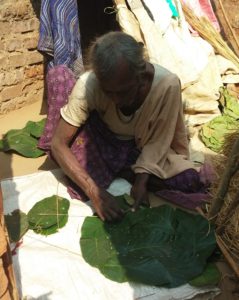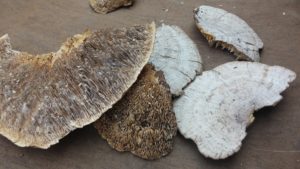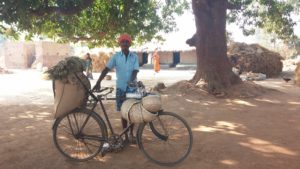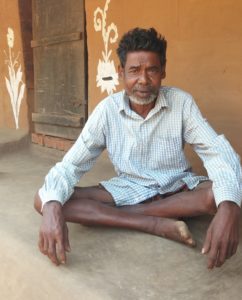Collective Information
There are various tribal groups spread throughout this area of Orissa as well as other places. Some of these groups include the Kolha, Bataudi, Santal, Saunti, and Bhuiyan. There are also groups that are considered PTVG (Particularly Vulnerable Tribal Groups), specifically the: Khadia, Mankaria, and Lodha. These groups are also renowned for wild honey collection, although for the Mankaria it is not a consistent practice. Instead the Mankaria people are more known for their craftsmanship with rope making. The Khadia, Mankaria, and Lodha have a common practice of NTFP (non timber forest products) . Ten years prior, their main source of livelihood was simply NTFP collection, however now they have had to start participating in wage labor and agriculture. The other tribal groups also practice agriculture and NTFP collection but this does not include gathering wild honey. The largest community are the Santal, a tribal group that can found in multiple Indian states, while the Manakaria are the smallest group with only 103 households remaining. The Specific numbers of the tribal groups are: Santhal (51,815), Kolha (42,209), Bhuyan (16, 291), Saunti (13, 396), Bathudi (22, 604), Khadia (4000), Lodha (758), and Mankidia (580).
The communities estimate that they have lived in the area for 100-120 years, while others pose they have been there for 150 – 200 years. There is no established time as when these groups migrated to this part of Orissa and from where they came from. Other ways that these tribal groups use the forest for their livelihoods include: firewood, food and medicine from NTFP collection, agriculture implements (i.e. collecting timber to make tools such as the plough), etc. There are over 100 different types of NTFPs available, main examples being aroo root or Sal leaves for leaf plates, and much of these resources are used to to earn money.
Within the communities, in general, there doesn’t seem to have been many changes within their culture and traditions. The children are now going to school and a few of the younger generation are to other locations, even other states, in search of work. Much of the latter has to do with the forest department having increased restrictions on the tribes being able to collect NTFPs, which is a major part of their livelihood and financial support. However, now that the forest rights act has come along, this should mean that the tribal groups will be to assert their right on these natural resources.
For the tribes who participate in honey hunting (mainly Khadia and Lodha, sometimes Mankaria), this wild collection is mostly done within Simlipal Biosphere Reserve but this practice also takes place in other parts of the district that surrounds this national reserve. The honey hunting season lasts for 6 months, out of which individuals from these tribes will go honey hunting for 100 days. This traditional practice is often done at evening time when it is dark, however there are times when honey is gathered from trees in the early morning.
Traditional Practices
Just as honey hunting is crucial source of income for these tribal communities that rely on NTFPs for the livelihood, so too is it an integral part of their spiritual beliefs. Even before a honey hunt, a pooja (worship of god) will be observed such as the Kabali or Badam Pooja. It is believed that if the pooja is not observed prior to a honey hunt then there are strong chances of a wild animal attack when in the forest. There is no celebration after a honey hunting session. However, before being brought home some of the honey is offered to the deities in the forest.
More on the Khadia
The most prominent honey hunting group in the Simlipal area is the Khadia Tribe. The Khadia people are spread across 10 different blocks of the Simlipal Reserve, comprising 55 places with 970 households, and in total a population of over 4000 individuals in the tribes. It is believed that the terms Khadia comes from the term “Kharkhari”, which means “Palanquin” or litter. This comes from the belief that they were once the Palanquin carriers so that when royalty or officials once came to the hills then they would carry them into villages on Palanquins. Another myth for where they came from derives from the term “Savara”, which means to be primarily foragers (hunter-gatherers). By referring to themselves as “Savara” then they are depicting themselves as the first to worship Lord Jagannath, since according to Orissa legend the “Savara” were the first to worship this god.
Within the Khadia villages there are separate hamlets called Kadhia Sahi or Dehuri Sahi. A common Khadia home is made of mud and wood with a thatched roof. For water sources, these communities most often depend on flowing rivers and streams. In regards to livelihood, both the men and women play a role in domestic life, such as home construction and NTFP collection.
Forest products such as aroo root will be gathered, cut, crushed, and then drained over a sheet with water. Once dried the final product is a chalk like substance that can be take with water and some sugar, and act as an aid for stomach aches. Other forest products include Sal seed that is crushed and dried for sell , Siali leaves are stitched into a plate called Kuli and sold in the market, and broomsticks are also made. Yet, by far, the main source of livelihood for this tribal community is honey. The Khadia people honey hunt from trees and cliffs.
During the rainy season they must reduce their forest collection so they have to support livelihood through wage labor. This involves working as an agriculture labor in the fields of their own village or another neighboring village. Their staple food is rice cooked with salt, chilly, and greens. The quantity and frequency of meals is completely dependent on the seasons with with winter being the best because it has the greatest food supply both with both harvest and NTFP collection. Thus, malnutrition is very common in the Khadia tribe due to their food habit and the lack of consistency in food availability. In terms of education, it is very poor among the villages both within and outside of the Similipal Reserve. Many of the children do not go to school, especially older siblings who stay home to take care of the younger ones, and often the Khadia people are expected to marry young. Yet, this is not the case for all of the Khadia people and some villages do strive to educate their children. There are several festivals the Khadia people celebrate through the year, such as: Makar Sankranti, Raja, and Gamha. A specific festival called Magha Puja is a celebration of the new leaves of flowers before they enter in the forest for NTFP collection.











